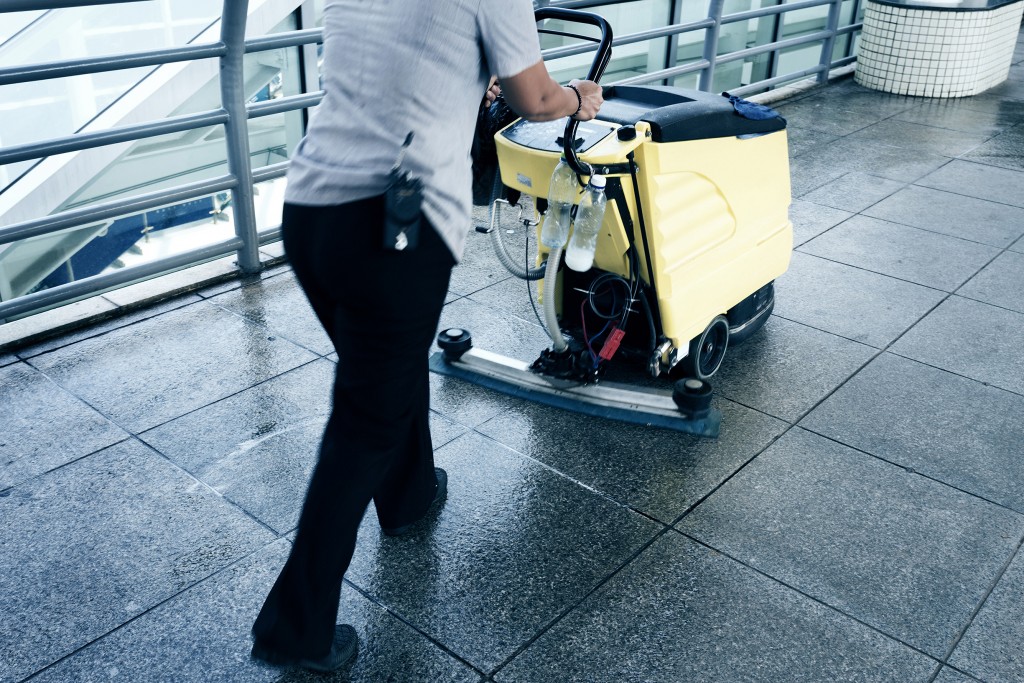Durability is important when choosing a flooring material, especially for commercial establishments. Malls, hotels, banks, office spaces, restaurants, and hospitals are some of the most highly-trafficked areas. They need floors to take the daily punishment of people walking on them, and these should be relatively easy and cost-efficient to maintain. Here are four of the most durable choices.
1. Terrazzo Floors
Taken from the Italian word for “terrace,” terrazzo was originally intended to be a low-cost flooring solution. Terrazzo is now considered a luxury finish since it is a composite flooring material made from chips of quartz, granite, glass, marble, or other stones. Terrazzo flooring is held together with an epoxy-resin or concrete binder and is highly customizable. A weighted roller is used to finish the material, followed by grinding and polishing to create a smooth surface.
New manufacturing techniques have extended terrazzo beyond flooring; high-end establishments sometimes use them for countertops and backsplashes. Terrazzo is valued not only for its durability and impermeability but also for its knack of leaving a lasting impression. Terrazzo is a favored finish in the most lavish hotel floors, showrooms, entryways, and high-end offices. Due to its impermeable nature, buffing terrazzo floors and daily mopping are advised for routine maintenance.
2. Luxury Vinyl Tile

Luxury Vinyl Tile or LVT is yet another durable and attractive floor option. This is tough enough for high-traffic areas of hospitals but can add to the appeal of high-end restaurants. That’s because apart from being able to handle abrasions and spills, LVT can mimic more expensive flooring like ceramic tiles, hardwood, marble, and anything in between. As LVT comes in an extensive range of styles and price points, it’s one of the most versatile and sought-after commercial flooring options.
While it’s durable for high-traffic areas, LVT isn’t sturdy enough for high-impact industrial or commercial kitchen applications. LVT is an excellent way to cut flooring costs for many commercial projects since it’s faster to install and cheaper than the materials it mimics. Maintaining LVT flooring is also quite simple; regular sweeping with a static dust broom and a good, dampened microfiber mop keeps it clean.
3. Rubber Flooring
This type of flooring is suited to high-traffic areas in hospitals and fitness gyms. Rubber flooring is very durable and slip-resistant and has excellent sound-dampening qualities. Not only can it take heavy traffic and heavy loads, but rubber flooring also provides good cushioning when walking on it, lessening fatigue for employees and customers. The cushioning also cuts down on the noise of dumbbells or other weights dropping and protects the sub-floor from impact damage.
Rubber flooring is easy to maintain, as it requires vacuuming and mopping with a rubber floor cleaner. While rubber flooring is cost-efficient, durable, and simple to maintain, its only drawback is its lingering “rubbery” odor. It’s also not aesthetically appealing, making rubber flooring best for gyms, hospitals, and labs.
4. Carpet Tiles
Carpet tiles may eventually make broadloom carpets a thing of the past. While they entail a higher initial spend, carpet tiles cost less in the long term. With carpet tiles, it’s possible to make spot removals and spot replacements on only the worn sections. This is more practical compared to replacing an entire roll of broadloom carpet, even if only a small portion needs replacing.
Although softer compared to its other hard-material flooring cousins, carpet tiles are a good choice for office flooring. They dampen the sound of heavy footfalls and utility carts and cushion against impact. Carpet tiles are also more spill and moisture-resistant; maintenance entails vacuuming, spot cleaning, and annual deep clean.
These are some of the most durable flooring types on the market today. To choose the best flooring option for your application, consider the amount and type of traffic, maintenance, aesthetics, and your budget.

